- Feb 11, 2022
How to Find and Catch Crappie in Open Water
Learn how four crappie guides target deep-water crappie during late winter.
The evolution of electronics with live sonar has changed how many anglers catch crappie during winter. Now crappie anglers with live sonar chase roamers as they scan for the larger crappie scattered over deeper water.
Before you stop reading this article because you don’t have live sonar, Bobby Garland Pro Barry Morrow is going to explain how to catch crappie this time of year without those tools, but first let’s talk about catching roamers.
Crappie Chaser
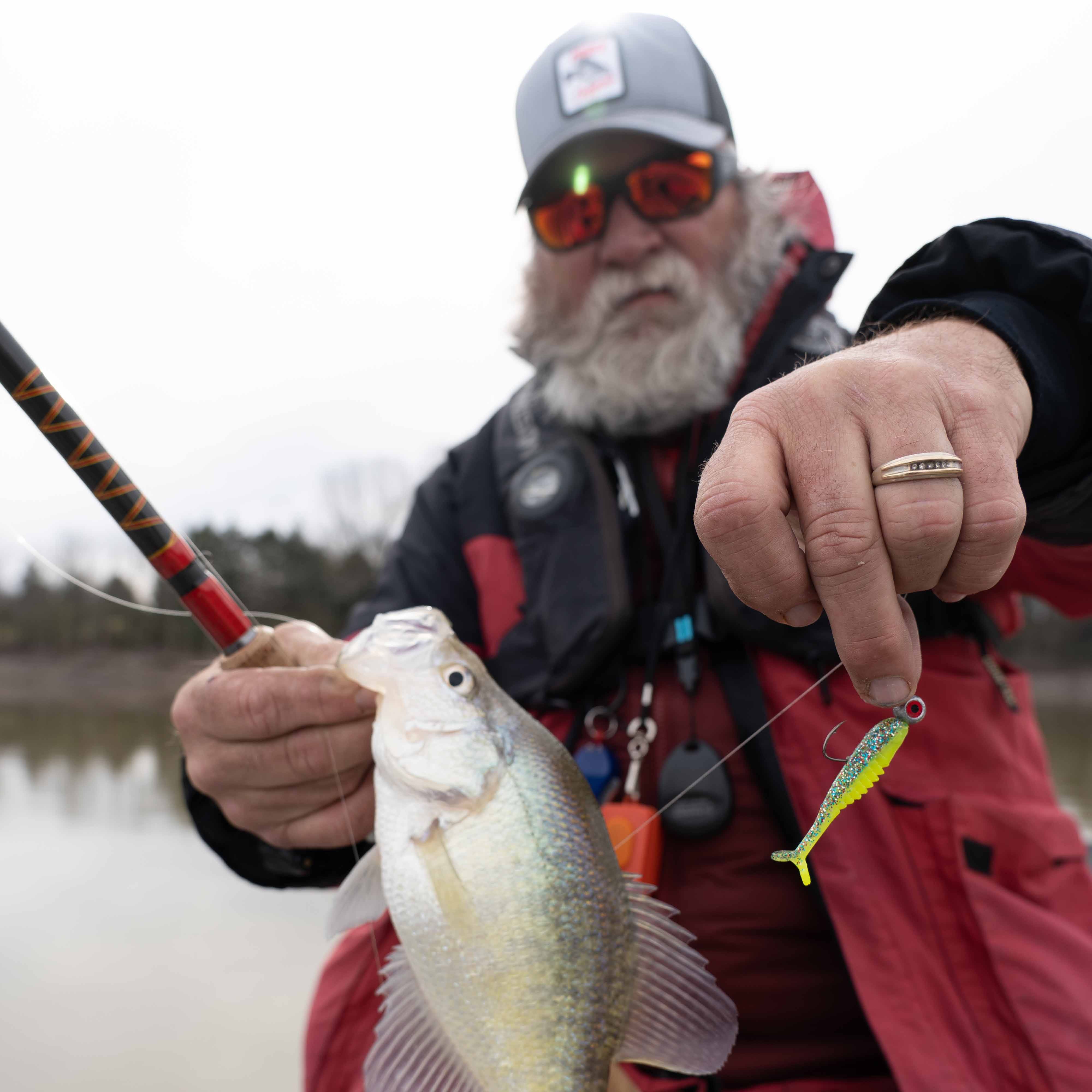

Beaver Lake crappie fishing guide Greg Robinson is a chaser. Robinson's success when fishing in the wintertime is based on his ability to see and cast to suspended roamers.
In terms of how to find crappie, Robinson said, “This time of year it’s all about staying out in deeper water; but be willing to move up if the water temperature starts rising. Even though we are close to the river channel, crappie may only be 12 foot deep.”
Robinson will pitch out a Bobby Garland Swim’R or Slab Hunt’R, rigged, a 1/8-ounce jighead, using a 13-foot rod. He’ll pitch past the crappie echo and let the jig fall to just above the fish. If the crappie doesn’t respond, Robinson will lower slowly to eye level to incite the crappie to bite.
Color makes a difference. Robinson likes Green Lantern in the stained river arms of Beaver Lake but will change to shad or pearl color patterns in clearer mid-lake areas.
“Crappie will respond in a negative way or positive when the lure is around them. It’s not surprising to see one spook off a small profile Swim’R, but other times will aggressively strike a large minnow shaped Slab Hunt’R,” Robinson said.
Seeing is Believing
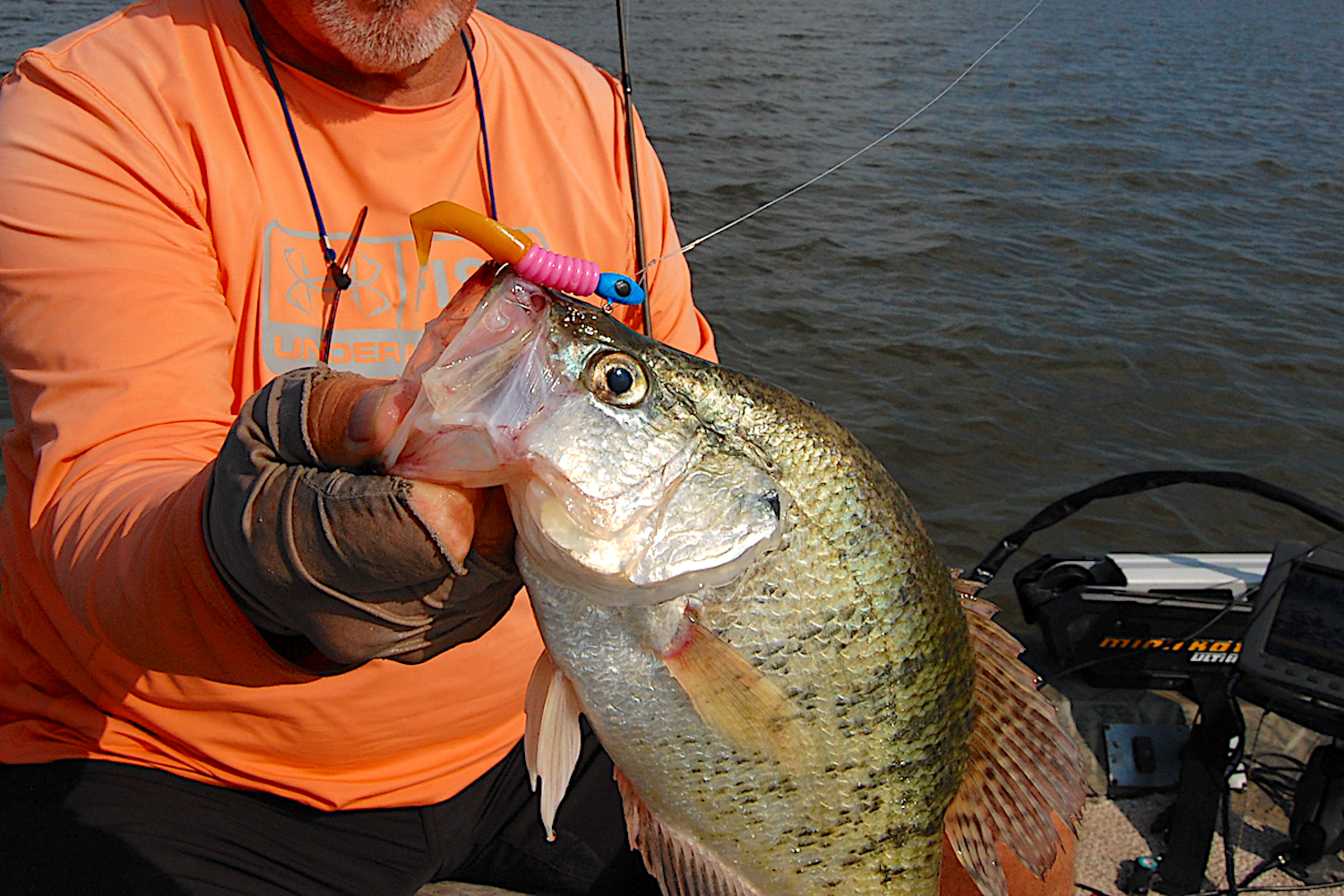

“During this time on Pine Creek in Oklahoma, where I guide, we are still fishing deep, dropping a single 1/4-ounce jighead rigged with a Bobby Garland 3-inch Slab Slay’R, usually around 16-foot deep in 30-some foot of water near the river channel,” said Oklahoma crappie fishing guide and Bobby Garland Pro Mike Scarborough.
Scarborough relies on live sonar when fishing this way. “I see every crappie I catch before I catch it,” Scarborough said.
He noted these fish are suspended crappie and not chasing shad. To catch these crappie Scarborough uses a long 13-foot fishing rod and pitches or drops a lure right above or at eye level to the suspending crappie.
“I use a long rod but will switch to a casting rod if the water is deeper than the length of the fishing pole,” Taylor continued, “Presentation is so important because you won’t catch them if you are too deep or if you spook them off.”
The longer, stiffer rod Scarborough uses allows him to just swing a crappie into the boat without netting it. He combines the longer rod with braid on his reels for more sensitivity. “On Pine Creek the water is more stained, so I use braid and tie it to the jighead. However, on Broken Bow, where I also guide, the water is really clear, so I tie a 6-foot leader of 6-pound fluorocarbon fishing line so not to spook the crappie off,” Scarborough said.
Because Scarborough is using a big jighead, his go to lure is the Bobby Garland 3-inch Slab Slay’R. He noted that the larger body style matches the jighead better, making it a more natural presentation.
“The solid body of the Bobby Garland Slab Slay’R helps keep it in place, and one Slab Slay’R will last for more than one crappie bite. Plus, the thin spear shape tail is the perfect shape and action,” Scarborough said.
When guiding on Pine Creek, Scarborough likes a more solid color, like Electric Chicken or Bluegrass, but will switch to Monkey Milk or Blue Ice when fishing Broken Bow.
Super Shallow Roamers
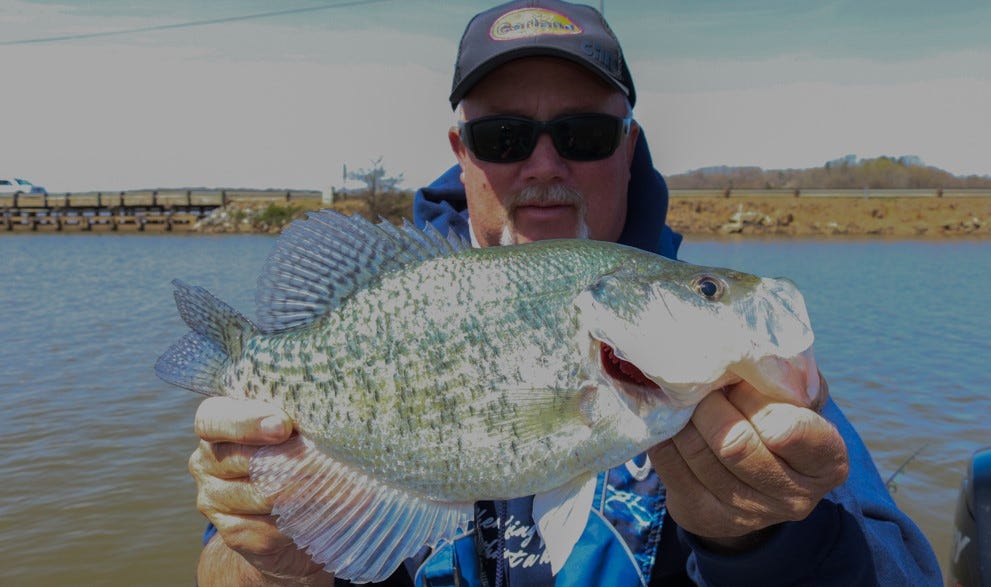

Bobby Garland Pro Jeff Lowdermilk said that his go-to technique this time of year is chasing suspending crappie on Lake James in North Carolina.
“I use a long 7-foot, 9-inch Dobyns spinning pole and cast 40 to 50 feet towards crappie suspending,” Lowdermilk said. “I’m fishing around points mostly in 20 to 30 feet of water in the main river channel, but here’s the kicker. Most of the crappie I’m catching are only 2 feet down from the surface.”
Lowdermilk noted that the water temperatures have been warmer than normal for this time of year, and said that he has been finding large schools of crappie suspending together.
“I don’t have to wait for a bite. The crappie strike a lure right away or I let it glide down to them,” said Lowdermilk.
To catch these shallow roamers, Lowdermilk uses Crappie Pro Overbite Sickle Jigheads in 1/32- or 1/48-ounce, preferring the lighter jighead on 4-pound test fluorocarbon high-vis fishing line. He rigs the jighead with a Bobby Garland Baby Shad in Monkey Milk or Pink Lemonade but will change to a Bobby Garland Swim’R if they are not biting the Baby Shad.
No Live Sonar? No Problem
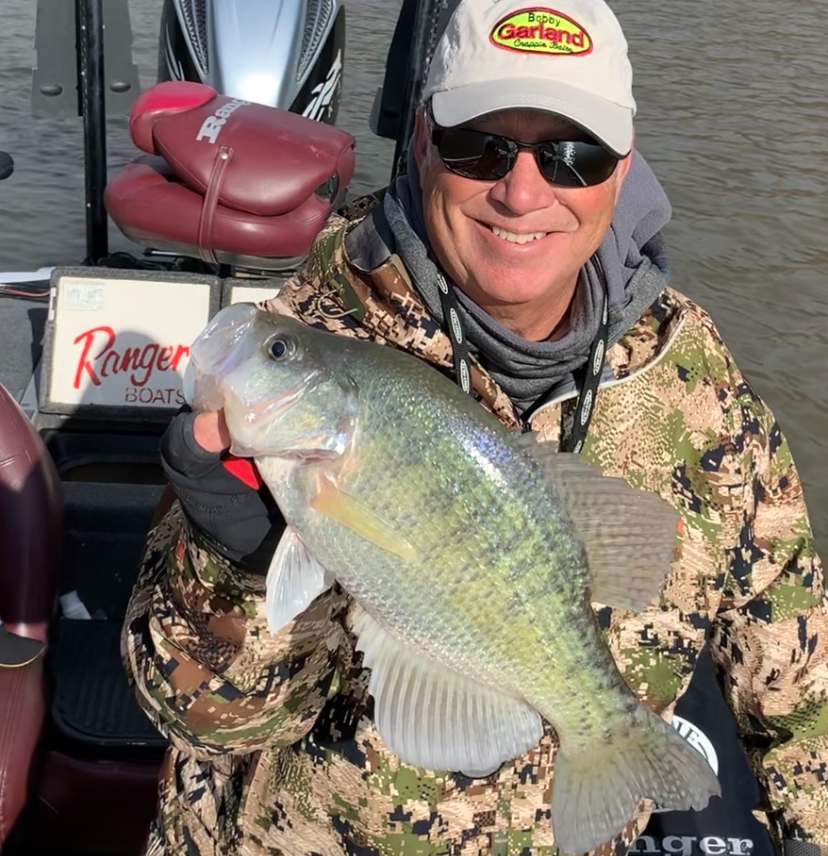

“Long before live sonar came around, I caught crappie in that period before crappie start moving into staging areas,” Missouri Crappie Guide Barry Morrow, “Instead of relying on seeing in live-time what the crappie were doing, I based where to fish during this time period on water temperature, baitfish and wind.”
Prime locations for this time are still deeper water, but along ledges or creek channel edges. Morrow searches for spots with submerged standing timber, stumps or places where anglers have sunk brush piles.
Morrow noted if an angler didn’t have live sonar technology the angler could hold on to a single pole or use two poles while sitting keeping the fishing poles pointed forward as the boat slowly moves forward.
“By pointing the rods out in front of the boat and moving slowly an angler can search an area for crappie and cover till you find multiple crappie. It also lets an angler present their lures in deep water or on ledges more effectively,” Morrow said. He noted that by moving slowly forward it allows the angler to ease up on the crappie or get a lure unhung if it gets snagged.
When fishing this technique Morrow will use a double drop. A 1/16- or 1/8-ounce Crappie Pro Mo’ Glo Jighead for the top jighead and a 3/16-ounce Mo’ Glo Jighead for the bottom jighead both tied with a loop knot.
On the top jighead Morrow will put on a Bobby Garland Baby Shad and on the bottom jighead a 2-inch Bobby Garland Slab Slay’R or Bobby Garland Minnow Mind’R. “On Truman Lake, where I guide, the water is stained usually, so I like darker color patterns like Chartreuse/Black or Green Lantern,” Morrow said.
Expert Tips for Fishing Deep
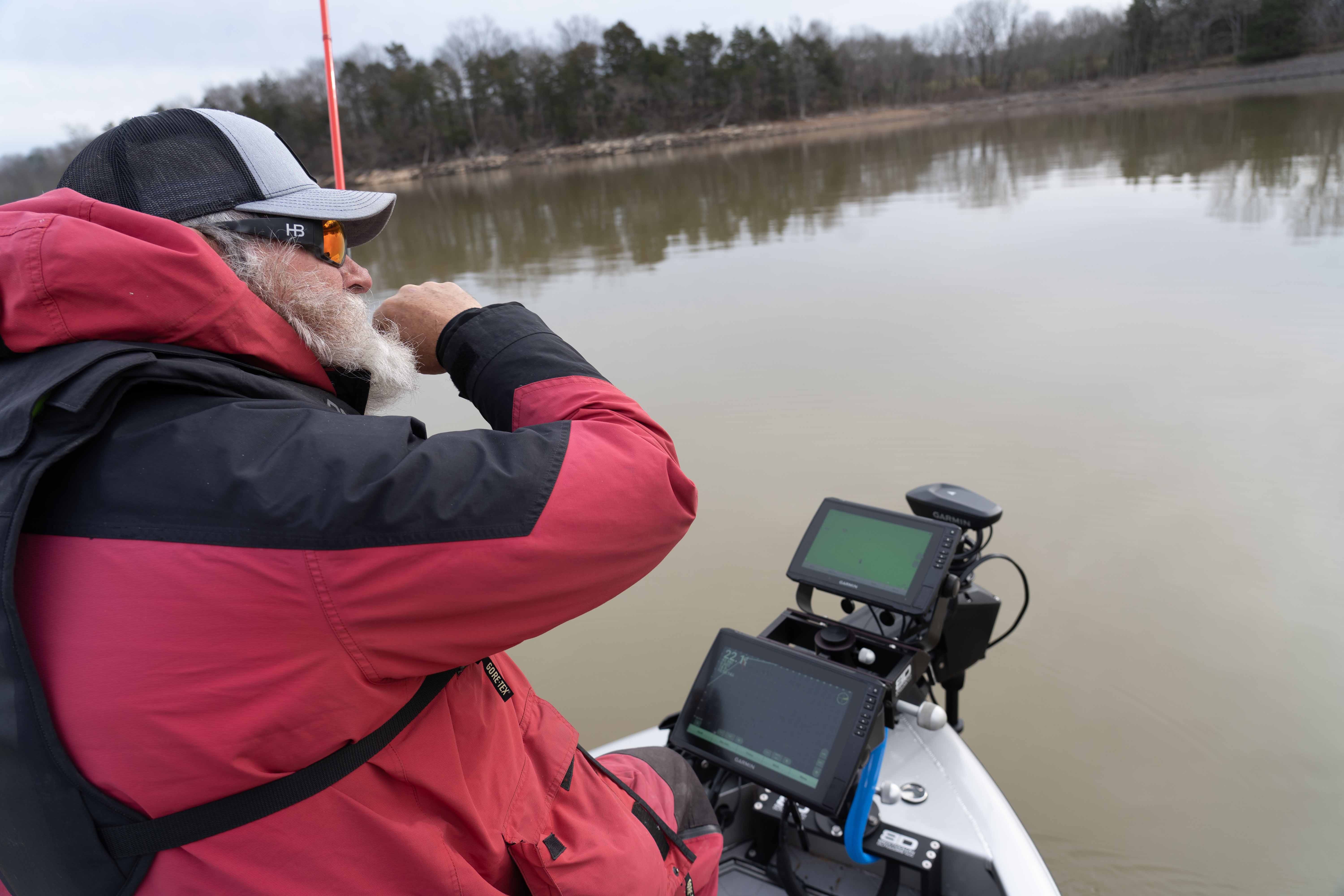

- Don’t spook a crappie by getting too close to them. Use a longer rod and pitch your lure out, allowing it to fall to the crappie. Mike Scarborough
- Roaming crappie are really skittish so make long casts and never, ever let your jighead hit the crappie. Greg Robinson
- Change lure colors constantly till you get them to bite, and don’t be afraid to change again during the day if the crappie stops biting. Barry Morrow
- Use low diameter fishing line. I use 4-pound test high vis fluorocarbon to get more bites in clear water and not spook the crappie off. Jeff Lowdermilk



